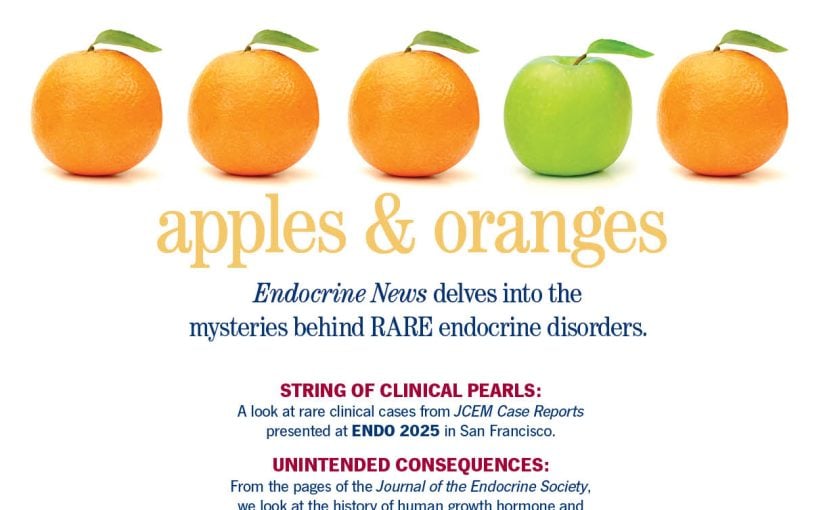The Endocrine Society joined a coalition of physicians, scientists, and public health and environmental organizations to send a formal petition to the Food and Drug Administration (FDA), calling on the agency to rescind its approvals for bisphenol A (BPA) in adhesives and coatings and set strict limits on its use in plastics that contact food.
New findings from a panel of experts convened by the European Food Safety Authority (EFSA) indicate that the harmful effects from BPA exposure can occur at levels 100,000 times lower than previously thought. This new safe level ‒ based on recent scientific evidence ‒ is more than 5,000 times below what FDA says most Americans are safely exposed to.
Without a doubt, these values constitute a high health risk and support the conclusion that uses of BPA are not safe. The petition calls on FDA to limit uses of BPA in food contact articles that may result in migration into food above 0.5 nanograms per kilogram of food.
“The process EFSA used to reassess the safety of bisphenol is a template for how FDA should be doing it for the hundreds of chemicals it approved decades ago. Transparent, thorough, and grounded in the science,” says Tom Neltner, EDF’s senior director for safer chemicals. “With Americans overexposed to BPA by more than 5,000 times, the agency must make this a top priority and make a final decision by the 180-day statutory deadline.”
The petition was filed by Environmental Defense Fund, the Endocrine Society, Breast Cancer Prevention Partners, Clean Water Action/Clean Water Fund, Consumer Reports, Environmental Working Group, Healthy Babies Bright Futures, Dr. Maricel Maffini, and Dr. Linda Birnbaum, former director of the National Institute of Environmental Health Sciences and National Toxicology Program.
BPA is used to make polycarbonate and other plastics, which are commonly used in hard items such as food containers, pitchers, tableware, storage containers and more. The chemical is also used in epoxy resins that line the inside of metal products and bottle tops. Small amounts of BPA can migrate from containers or equipment into food and beverages.
Industry has taken steps in the past to limit the use of BPA in can linings and plastic baby bottles. These actions followed 2008 findings from the Centers for Disease Control and Prevention indicating the chemical showed up in 92% of US adults and additional studies that showed BPA can act like the female sex hormone, estrogen, in humans and disrupt normal development.
Findings from EFSA’s expert panel show that BPA’s effects are much worse than previously understood and that people are exposed at levels dramatically above what is safe. Extremely low exposures to BPA can lead to an overactive immune system producing out of control inflammation, as well as changes in the ovaries, endocrine disruption, and reduced learning and memory, according to the EFSA panel.
“FDA has an obligation to protect us from toxic chemicals that can come in contact with our food,” says Maricel Maffini, PhD, scientist and coauthor of the petition. “These new findings should be a wakeup call to the FDA and all of us that our health is in jeopardy unless we take swift action to limit the amount of BPA that can come into contact with our food.”
FDA has long collaborated with EFSA on risk assessment and risk communication related to food safety, including working together to increase understanding of risks from chemicals used in food packaging, like PFAS. The agency now needs to listen to the warnings on BPA from its expert counterparts at EFSA and take steps to dramatically reduce our exposures to the chemical.
“These findings are extremely concerning and prove the point that even very low levels of BPA exposure can be harmful and lead to issues with reproductive health, breast cancer risk, behavior and metabolism,” says Endocrine Society BPA expert Heather Patisaul, PhD, of North Carolina University in Raleigh, N.C. “The FDA needs to acknowledge the science behind endocrine-disrupting chemicals and act accordingly to protect public health.”
You may also like
Phthalates Pose Significant Cardiovascular Disease Risk
A groundbreaking global international analysis published in eBioMedicine (via The Lancet) has quantified the worldwide cardiovascular toll attributed to di-2-ethylhexyl-phthalate (DEHP) — a common plastic additive used to soften the plastic polyvinyl chloride (PVC), which is found in everyday objects such as vinyl records, pipes, and cosmetics. In 2018 alone, DEHP exposure accounted for an…
Easy Targets: How Endocrine-Disrupting Chemicals Affect Reproductive Endocrinology
Endocrine-disrupting chemicals have been implicated in a wide range of poor health outcomes, including infertility and obesity. Endocrine News speaks to Almudena Veiga-Lopez, DVM, PhD, the chair of an upcoming ENDO 2025 symposium on these chemicals’ effects on reproductive organs, which are particularly vulnerable to EDCs. Endocrine-disrupting chemicals are everywhere, and there is seemingly no…

